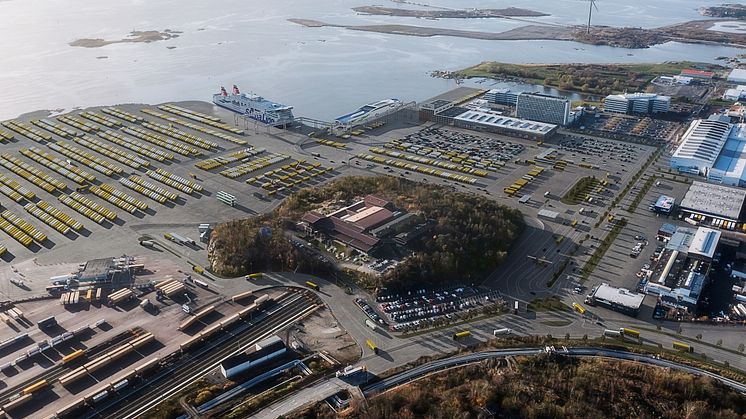
Press release -
New agreement paves the way for the next step in Stena Line's relocation in Gothenburg
The Gothenburg Port Authority and Stena Line have today signed an agreement that enables the planned relocation of Stena Line's operations to Arendal in the Port of Gothenburg to enter an even more operational phase. The agreement includes the construction of the new terminal, as well as rental and leasing of the terminal area, including a new terminal building. The agreement spans over 25 years.
“With the agreement in place we are a big step closer to a relocation of Stena Line’s operations. To consolidate the terminal operations to the heart of the freight hub in the outer port is a logical step that gives us synergies and strengthened opportunities to continue developing the whole port in line with our sustainability ambitions,” says Elvir Dzanic, CEO of the Gothenburg Port Authority.
For Stena Line, the move means that the company's operations can continue to grow in the port in the long term, based on the company's growth and sustainability ambitions.
"Stena Line has an ambitious agenda to strengthen our position as a leader in sustainable shipping, and this agreement will provide us with the tools to grow in Gothenburg in the long term. We anticipate continued increased demand from our passengers and freight customers, and in Arendal, we will be able to expand while helping Gothenburg develop in a sustainable direction," says Niclas Mårtensson, CEO of Stena Line.
As part of Stena Line's goal to reduce its carbon footprint, the company will gradually introduce new sustainable fuels into its fleet of vessels, and this requires both infrastructure and well-functioning supply chains to support the transition, which the new location provides conditions for.
For the people of Gothenburg, the move means a significant reduction in heavy traffic in the central parts of the city, as the land areas currently occupied by Stena Line's existing operations will be returned to the city and its ongoing urban development.
"In the end, it will be a win-win situation for all parties involved. So, I am very proud that we have now jointly outlined the way forward through this agreement," says Elvir Dzanic.
Preparations for Stena Line's move are already underway in the Port of Gothenburg. Exactly one year ago, on June 9, 2022, the Gothenburg Port Authority acquired a 108,000 sq.m. area for this purpose. Currently, work is underway to establish an additional 140,000 sq.m. of completely new terminal areas, which will largely be dedicated to Stena Line's relocation. It has already been determined that Stena Line's new departure and arrival hall will be located in the building currently housing the Volvo Museum.
Given the high demands placed on a high-quality port and terminal, the parties to the agreement have developed a timetable with the ambition to put the new terminal into operation by 2028.
The agreement between Stena Line and the Gothenburg Port Authority will be considered by the respective companies' boards, as well as the Gothenburg City Council and Municipal Assembly, before it comes into effect.
Topics
Fact file: Port of Gothenburg
The Port of Gothenburg is the largest port in Scandinavia. Around 30% of Swedish domestic and foreign trade passes through the Port of Gothenburg and over 50% of all container traffic. The port is a full-service port, and offers industry guaranteed, climate-smart access to the whole world. Direct services to key markets ensure highly efficient, sustainable, and reliable transport 24 hours a day, 365 days a year. The focus is firmly on sustainability, innovation, and digitalisation in a concerted effort to maintain the ongoing development of climate-efficient freight transport and calls by vessels. With over 30 rail shuttles offering daily departures, companies throughout Sweden and Norway have a direct, climate-neutral service to the Port of Gothenburg. The port handles energy products, vehicles, ro-ro units, containers and passengers. 22,000 people are employed at the port.
Follow us on:
Facebook
Instagram
LinkedIn
Twitter
www.portofgothenburg.com


